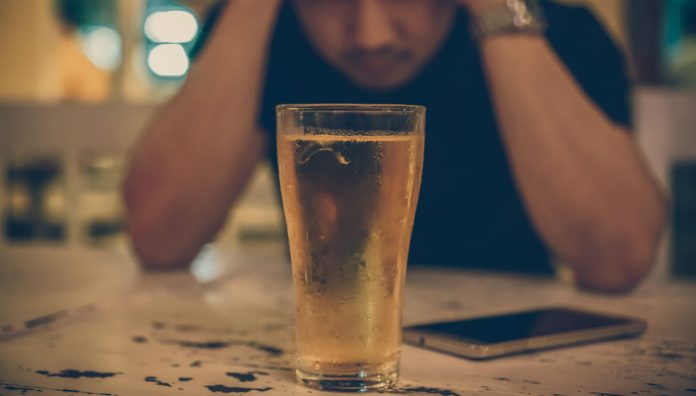The public conversation around substance abuse often centres around illicit drugs and prescription medicine misuse, but a new study suggests that the impact of alcohol can be more damaging to Australian communities.
The study emulated research conducted internationally, examining the damage occurred to users of alcohol and drugs, as well as to members of their families and community, through a series of guided ‘workshops’.
For the Australian study, researchers assembled 25 individuals from around the country whose areas of expertise include; treatment services, addiction medicine, psychiatry and pain medicine. There were also representatives from academia and research, policy and planning, children and youth, Aboriginal health, homeless services, judiciary, emergency services and police.1
Participants used a detailed set of guidelines to ‘score’ drugs, based on their physical, psychological and social harm to users and others. Harm factors to users included drug-specific and drug-related mortality and morbidity, psychological dependence, impairment of mental functioning and loss of relationships. Meanwhile harm factors to others included crime, environmental damage, family adversities and economic cost.1
While drugs that dominate public discourse, such as crystal methamphetamine, ranked highly – alcohol was ranked by participants as causing the greatest overall harm. It was also given the highest score ‘by far’ in terms of harm to others, scoring 41 compared with the next highest score of 24 for crystal methamphetamine.1
Dr Mark Naunton, Head and Professor of Pharmacy at the University of Canberra’s Faculty of Health, told Australian Pharmacist that, as frontline healthcare professionals, community pharmacists have an important role to play in identifying patients who might be experiencing health problems as a result of high alcohol intake.
‘Pharmacists interact with many patients over a short space of time,’ he said. ‘They therefore can play a key role in promoting alcohol awareness to a wider population and signpost people to the available treatments if necessary.’
He urged pharmacists to be aware of patients who are seeking treatment for conditions that may be associated with high alcohol intake, such as indigestion, sleep disturbances, hangover treatments and headaches.
In addition, he said that pharmacists may also recognise patients whose alcohol intake is higher than recommended in other ways, urging them to be alert for patients demonstrating memory loss, signs of depression and reporting weight loss.
Where necessary, Dr Naunton encouraged pharmacists to have a private conversation with the patient about seeking out further support, either referring them to their GP or directing them to state-run alcohol and drug services or support groups.
He also noted that pharmacists can offer support to community and family members affected by high alcohol intake, for example, women and children who have been exposed to the violent consequences of alcohol use are able to access support from the Salvation Army.
‘Community pharmacists have a major role to play because they are so accessible, and at risk alcohol intake is common in the community and is a public health issue,’ he said.
Irvine Newton, community pharmacist and former chairman of the Pharmaceutical Society of Australia’s harm minimisation committee in Victoria, agreed.
He noted that community pharmacists interventions could be particularly beneficial for young men, who might not have regular contact with other healthcare professionals.
‘It’s that close association with people. People aren’t always going to make an appointment to see their GP about this, if they have a GP – and a lot of young men in their mid-20’s don’t. So a GP might not be able to identify the problem, but a pharmacist might,’ Mr Newton told Australian Pharmacist.
The challenge, Mr Newton said, is initiating a conversation about a customer’s alcohol consumption.
‘It’s all about relationships. If you can establish credibility and empathy then you’ve got some sort of a chance,’ he said.
References
- Bonomo Y, Norman A, Biondo S et al. The Australian drug harms ranking study. Journal of Psychopharmacology 2019;33(7):759-768. At: https://www.ncbi.nlm.nih.gov/pubmed/31081439



 John Jones MPS, pharmacist immuniser and owner of My Community Pharmacy Shortland in Newcastle, NSW[/caption]
John Jones MPS, pharmacist immuniser and owner of My Community Pharmacy Shortland in Newcastle, NSW[/caption]


 Debbie Rigby FPS explaining how to correctly use different inhaler devices[/caption]
Debbie Rigby FPS explaining how to correctly use different inhaler devices[/caption]




 Professor Sepehr Shakib[/caption]
Professor Sepehr Shakib[/caption]

 Lee McLennan MPS[/caption]
Lee McLennan MPS[/caption]
 Dr Natalie Soulsby FPS, Adv Prac Pharm[/caption]
Dr Natalie Soulsby FPS, Adv Prac Pharm[/caption]
 Joanne Gross MPS[/caption]
Joanne Gross MPS[/caption]





